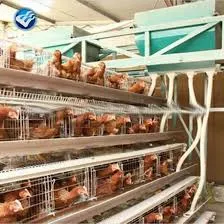Innovative Automatic Egg Tray Production Machine for Efficient and Sustainable Packaging Solutions
Jul . 30, 2024 04:25 Back to list
Innovative Automatic Egg Tray Production Machine for Efficient and Sustainable Packaging Solutions
The Revolution of Egg Tray Production Automatic Machines and Their Impact
In the realm of packaging solutions, the need for efficient, sustainable, and cost-effective products has never been more pressing. One such innovative solution is the egg tray automatic machine, a modern marvel that streamlines the production of egg trays, significantly enhancing efficiency while addressing environmental concerns.
Understanding Egg Tray Production
Egg trays are essential in the poultry industry, providing a safe and effective means of transporting eggs from farms to consumers. Traditionally, these trays were made from materials that contributed to environmental degradation, such as plastic. However, with the increasing focus on sustainability, manufacturers have shifted towards using recycled paper pulp – a biodegradable option that helps reduce plastic waste.
The egg tray automatic machine plays a vital role in this transformation. These machines are designed to produce egg trays in large quantities, ensuring that the supply meets the ever-growing demand for poultry products. The automation eliminates the need for extensive manual labor, reducing production costs while increasing output.
Key Features of Automatic Egg Tray Machines
Automatic egg tray machines are equipped with several advanced features that enhance their functionality. Generally, they operate on a system that includes pulp preparation, molding, drying, and packaging.
1. Pulp Preparation The process begins with the collection of waste paper, which is then transformed into pulp. This step is crucial, as the quality of the pulp directly affects the strength and durability of the egg trays. Advanced machines ensure consistent pulp quality through optimal mixing and blending techniques.
egg tray automatic machine

2. Molding Process Once the pulp is ready, it is formed into trays using molds. Automatic machines use hydraulic or pneumatic pressure to shape the pulp accurately, resulting in uniform trays that meet industry standards. The precision in molding reduces excess material, minimizing waste.
3. Drying System After molding, the trays require drying to achieve the necessary rigidity and strength. Automatic machines utilize various drying methods, including natural sunlight, hot air, or infrared drying. The automated drying systems ensure that trays are dried evenly and efficiently, speeding up production times.
4. Packaging Finally, the dried trays are automatically packaged for transport. Robust packaging is essential for maintaining the trays' quality during shipping, and automation ensures that the packaging process meets the required standards quickly and effectively.
Advantages of Using Automatic Machines
The benefits of automated egg tray production are numerous. Firstly, the machines significantly reduce labor costs, as fewer personnel are needed to operate them. Secondly, the increased efficiency allows for a higher output, enabling manufacturers to meet market demands more effectively. Moreover, the use of recycled materials in egg tray production supports environmental sustainability, aligning with global efforts to reduce waste and promote eco-friendly practices.
In addition, the quality of the trays produced by automatic machines tends to be higher. Automation reduces human error, ensuring that each tray meets the required specifications. This consistency is vital for consumers who expect reliable packaging for their eggs.
Conclusion
The egg tray automatic machine represents a significant advancement in the packaging industry. As the world moves towards more sustainable practices, these machines not only improve efficiency and reduce costs but also foster environmental stewardship through the use of recycled materials. The integration of automation in egg tray production is a step towards a more efficient and responsible future, benefiting both manufacturers and consumers alike. With ongoing technological advancements, we can expect even more improvements in the functionality and efficiency of egg tray production machines in the years to come.
-
Automatic Feeding Line System-Pan Feeder Nipple Drinker|Anping County Yize Metal Products Co., Ltd.
NewsJul.29,2025
-
Hot Sale 24 & 18 Door Rabbit Cages - Premium Breeding Solutions
NewsJul.25,2025
-
Automatic Feeding Line System Pan Feeder Nipple Drinker - Anping County Yize Metal Products Co., Ltd.
NewsJul.21,2025
-
Automatic Feeding Line System Pan Feeder Nipple Drinker - Anping County Yize Metal Products Co., Ltd.
NewsJul.21,2025
-
Automatic Feeding Line System - Anping Yize | Precision & Nipple
NewsJul.21,2025
-
Automatic Feeding Line System - Anping Yize | Precision & Nipple
NewsJul.21,2025






